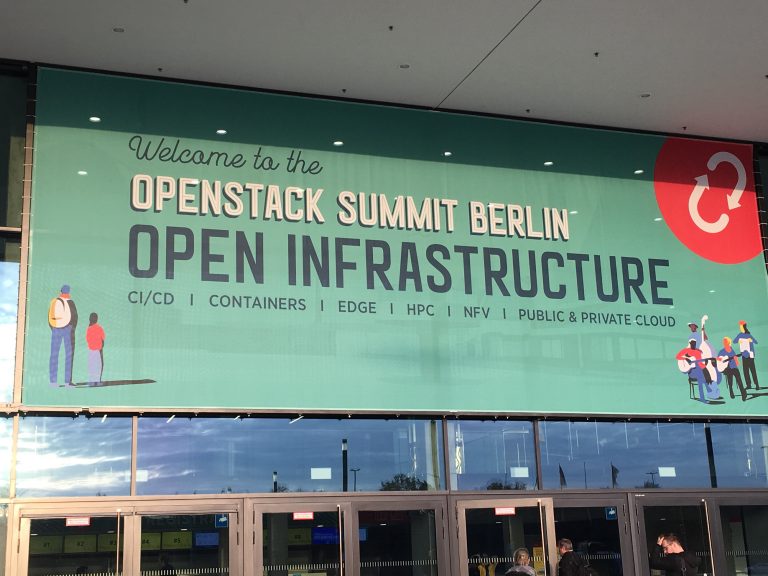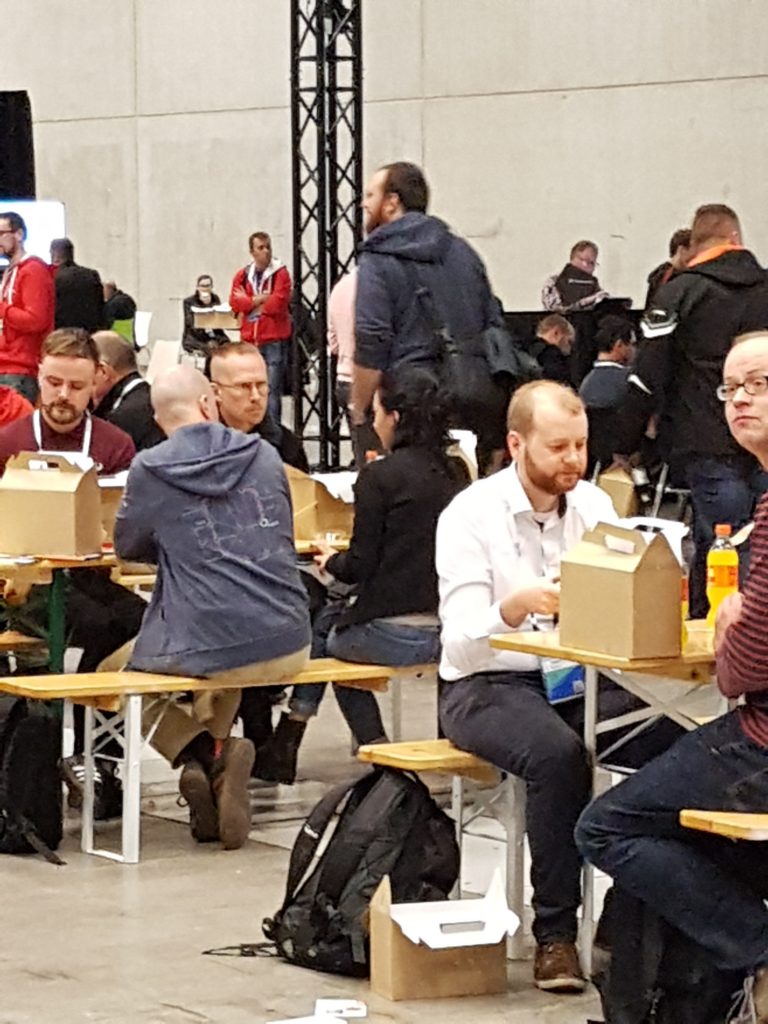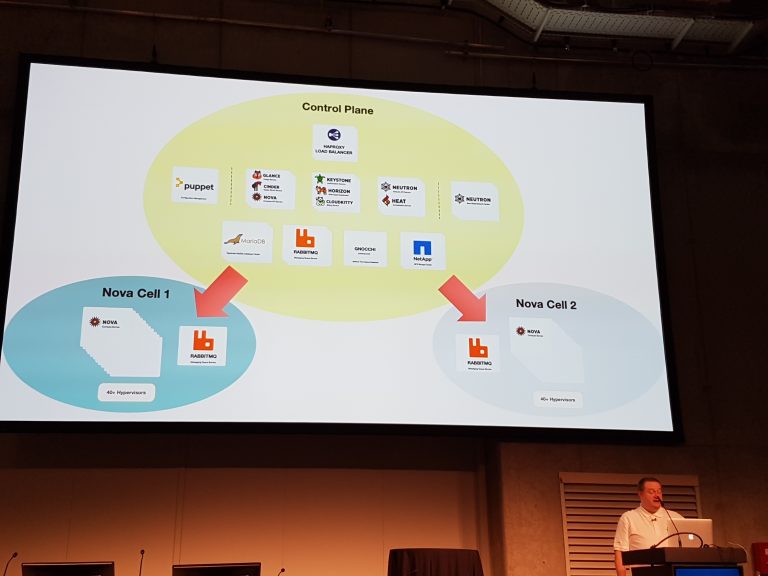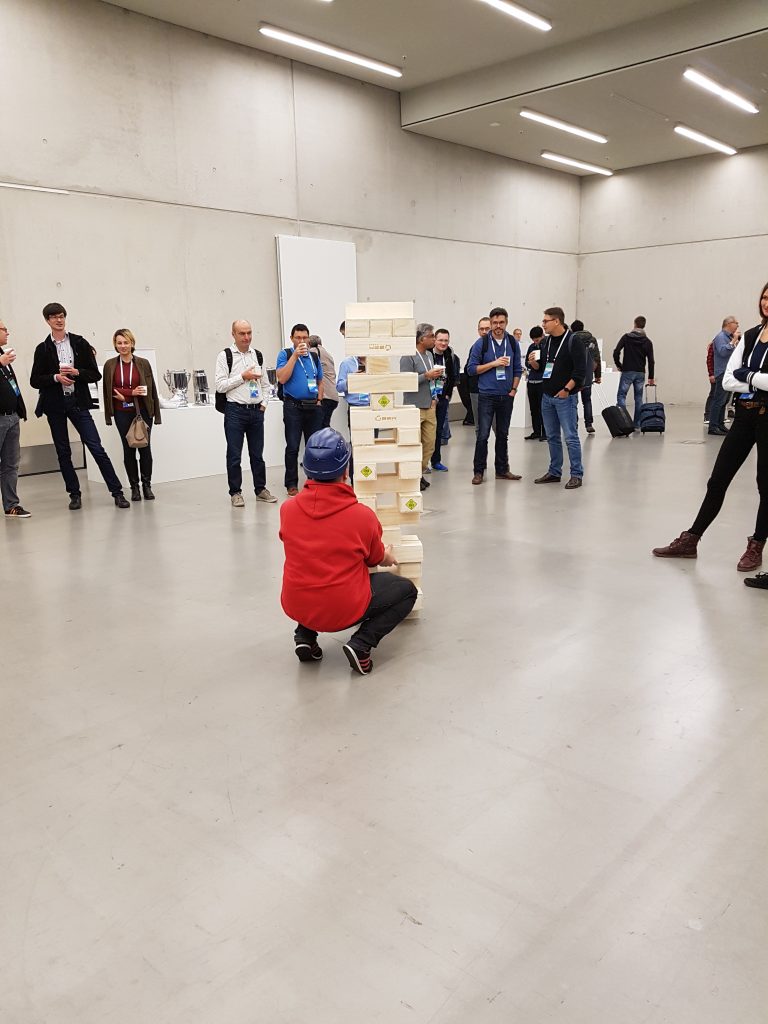After a couple of month as a Cloudical employee, I felt brave enough to visit the OpenStack Summit. Middle November, rain in the air and a lemming migration towards the CityCube Berlin. What could possibly go wrong?

What?
OpenStack is a free and open-source software platform for cloud computing and the pertain community. This community inhere companies, organizations and individuals that develops software, or in other ways support OpenStack.
2010 Openstack started as a joint project of Rackspace Hosting and NASA, but as of 2016 it is managed by the OpenStack Foundation. Since then more than 500 companies have joined the project.
How come?
Servers and storage are a must have. But sooner or later the limits of the physical servers starts to show. To deal with this requires a lot of time and money, something that very few companies appreciate. Adding RAM, bigger disk, and CPUs. The following virtualization amounted to adding hypervisor. A program that allows multiple operating systems and applications to share a single hardware processor. What a treat !
But later on also this solution started to chafe as the system administrator had to add several types of hypervisors and virtual servers from different vendors. The more added the trickier it got to keep up and get an overview. Having the possibility to handle the physical servers vitrally through a dedicated program was a positive change but this did not eliminate the frustration as the developers and users did not manage to levigate their measure and receive the results within a reasonable timeframe.
And so! OpenStack therefore comes in as the next layer on top of the already virtualized and the hypervisors. Through OpenStack all the different parts of the infrastructure become accessible for the user. Now it is possible to handle the IT environment without having to order the infrastructure through an IT architect. No worries, the physical servers are still there but the accessibility is simplified.

For who?
But who wants to work in additional layers? WMWs, KVM, Xen Hyper V etc… And THEN OpenStack on top? Complex to implement, steep learning curve and as constantly developing solution there is always the risk for users coming across inaccurate and/or outdated documents within the community. What a headache! Wouldn’t it be better to just place that order at the IT architect and then get yourself a coffee?
This we need to sort out!
Do you want to virtualize and scale your IT-structure? If you are still considering whether you are going to virtualize or not, maybe OpenStack isn’t what you need for the moment.
Are you looking to automate repetitive chores while updating your infrastructure? Now OpenStack could be interesting!
Do you have several teams involved in your processes? For every addition there is a new opportunity miscommunication and compilation. Let’s minimize this.
Would you like to have more control with a unitary dashboard? Yes. The answer to this is yes. A unitary dashboard will help you to manage your IT infrastructure.
Do you like open source? I think you will find that you do! You can rely on and contribute to the community. You can do it yourself, you can adjust and integrate with open APIs. Be in- dependent and rely on the strength in numbers at the same time!

The Summit
The OpenStack foundation arranges every year several events and among those the OpenStack Summit. This November it was time for the Summit to take place in Berlin.
As a first time visitor, I was excited to see what this Summit had in store for us. Turned out, I was not alone. 2700 happy campers from 63 different countries came to participate for the three day long summit. Apart from the five headline sponsors the lineup was full of OpenStack users. New as well as growing. With a program of 200 sessions and workshops and also an exhibition area, I have to admit it was kind of tricky for a newbie to navigate.

Start from the beginning.
When in doubt, starting from the beginning is always helpful. The keynote sessions gave a good introduction. The speakers let us in on user and success stories as well as updates and pilot projects. It also serves a guide when you are having difficulties to make up your mind for what further session you wish to attend.
The exhibition area.
Here you can easily work the room. There was a friendly and chatty atmosphere that featured the exhibition. The perfect opportunity to make contacts, ask questions and see what the vendors have to offer. (More than the goodies of course, even though I took the time to collect them as well.)
Bring a friend.
Keynotes and Exhibitions in all its glory. The best hack for a first time visitor is to bring a friend. A friend who knows the environment, what to see and where to be. A friend who also happens to be the Head of Cloud Technology at Cloudibility. Please read the indentation from our very own Kim-Norman:
The OpenStack Summit is transforming more and more to an Open Infrastructure Summit. OpenStack is just one part of it. Each second talk is about container infrastructure topics like Docker or Kubernetes. Software defined network tools combine and connect the whole stack: bare metal, virtual machines and containers.
OpenStackKubernetes
The combination of OpenStack and Kubernetes is more than a fix idea. Both ecosystems work very well together. Run Kubernetes on top of OpenStack to use the dynamic instance provision and easy autoscaling of your Kubernetes clusters or use Kubernetes to deploy OpenStack easily. OpenStack Kolla-Kubernetes is obsolete but there is a very nice new project to do this: OpenStack Helm. Deploy and upgrade containerized OpenStack environments by using the standardized Helm charts. In combination with Rook you’re able to run OpenStack and Ceph on Kubernetes with all benefits of microservices.
Vanilla vs. Distribution
Each enterprise OpenStack vendor is using his own deployment strategy: Ansible (SUSE), TripleO (RedHat), Juju (Canonical) or a bunch of tools like Jenkins, Salt (Mirantis). If you’re asking the vendors for their upgrade strategy you get always the same answer: upgrade is no problem. In the real life the situation looks a little bit different. The OpenStack upgrade is still one of the trickiest parts in the OpenStack operation. For my experience there is no difference between Vanilla and Distribution for updates. Both are working well if you know what you are doing. If not you’ll have a big problem. The advantage of Vanilla is that you’ve written the automation by your own; you know what your code is doing. It makes troubleshooting easier. The complexity is getting higher if you’re including third party solutions like storage or software defined networks. The subscription model of the OpenStack distributions are very different. You need to inform you about scaling costs.
Authors:
Emelie Gustafsson / Kim-Norman Sahms – Cloudical Deutschland GmbH
